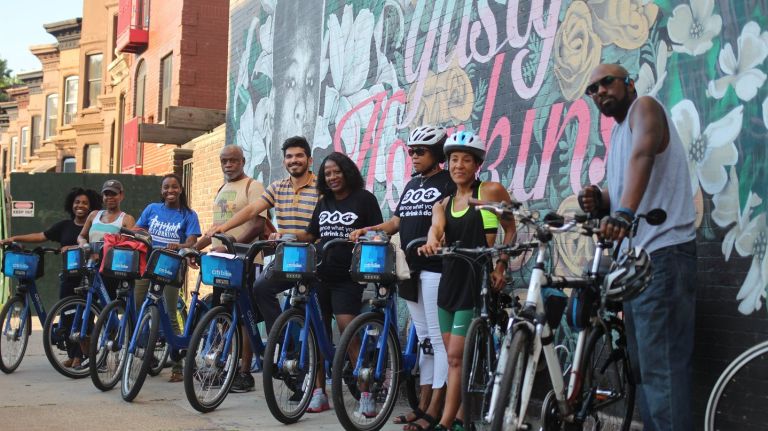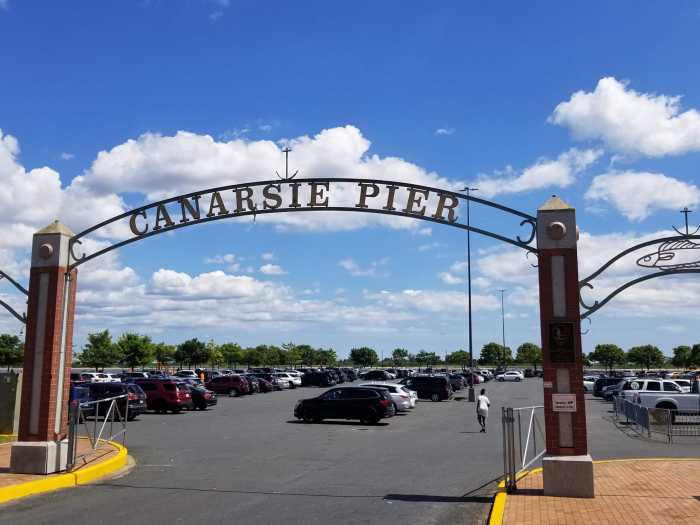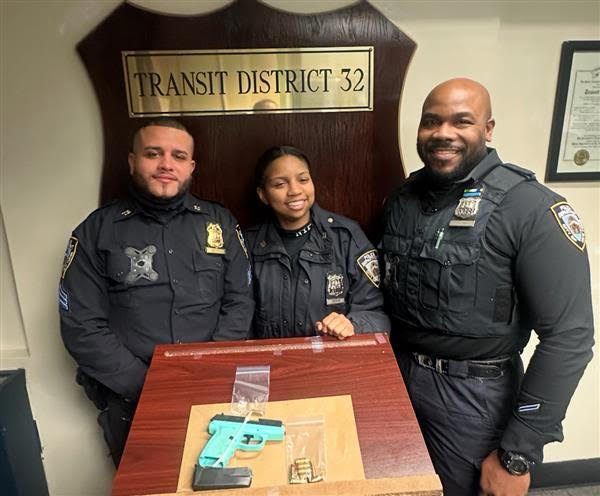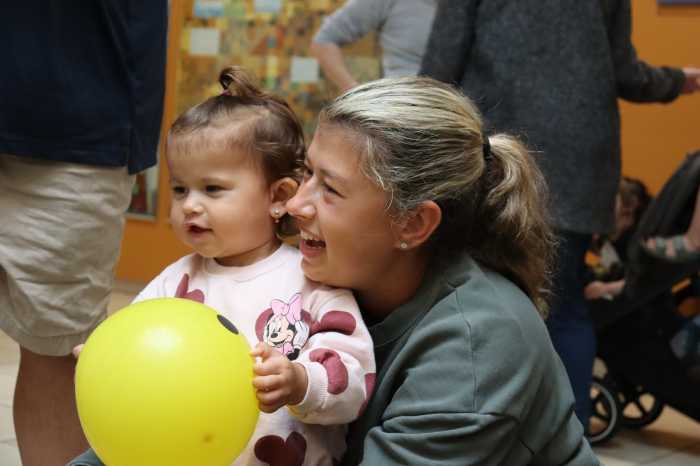
When Citi Bike expanded throughout Bedford-Stuyvesant last fall, many viewed the network as a harbinger of gentrification. Usage was low. Residents griped over the loss of parking to make way for new stations.
But a local community development organization saw Citi Bike as a tool to combat the neighborhood’s health, employment and transportation issues. Through a partnership with the city last June, the Bedford Stuyvesant Restoration Corporation has been able to reshape the perception of bike sharing while breaking down barriers to accessibility.
“We’re eager to bring the benefits of low-cost transportation that are tied directly to our goals related to employment,” said Colvin Grannum, Restoration’s president and CEO. “Because many job seekers here can’t afford to get to their interviews.”
Currently, Bedford-Stuyvesant ranks among the ten worst neighborhoods in the city when it comes to poverty and unemployment as well as obesity and diabetes rates, according to Health Department data.
“Among blacks and Hispanics, there are measureable disparities when it comes to income, health, obesity and hypertension,” Grannum added. “All of this affects people’s abilities to get to school or work.”
Under the Better Bike Share Partnership, Grannum teamed up with Motivate, the operators of Citi Bike, and the city’s Transportation and Health departments to get more people using the system in a bid to improve the community’s overall quality of life.
Restoration has worked to help place 26 new stations in areas that would fill gaps in mass transit, and to institute corporate subsidies that allow for employers to pay for all, or half, of Citi Bike’s $155 annual membership.
Restoration also hosts biweekly bike rides that are occasionally led by community leaders or elected officials, including Brooklyn Borough President Eric Adams and Councilman Robert Cornegy.
“Restoration is helping shape the conversation of the benefits of cycling,” Adams said. “They’re putting a face on biking that people can identify with that says, ‘Hey, biking is for all.’”
The rides attempt to dispel fears of gentrification, Restoration’s biggest challenge from the start.
“I was definitely part of that group that didn’t want Citi Bike here,” said Chinasa Grant, 20, as she pedaled a bright blue Citi Bike along Lewis Avenue during one of the coalition’s biweekly community rides. “Brooklyn has changed so quickly. I saw it as just another inaccessible addition to the neighborhood.”
Grant, a lifelong Crown Heights resident, aligned with more than one third of Bedford-Stuyvesant residents polled in a joint Health Department and Restoration survey in August and September of 2015. A total of 35% of those surveyed either “strongly disagreed” or “somewhat disagreed” with the statement that “Citi Bike is intended for people like me,” according to information provided by Restoration.
More recently, in May, cries of gentrification as personified in cycling infrastructure helped table a Transportation Department bike lane proposal in nearby Clinton Hill.
“When people often think of biking and bike lanes they see it as a code word for displacement and gentrification,” Adams said. “But in fact a large number of people who bike are non-English speakers who come from diverse ethnic groups of the borough.”
Grant, who studies sociology at New York University, said her initial idea of the prototypical Citi Bike rider was based on, well, where Citi Bike stations are most prevalent — in Manhattan, by her school, in Downtown Brooklyn and Williamsburg. But she came around to the system when she heard of discounts and benefits through Restoration.
Adams said organizations need to do more to “have diverse faces in leadership” because “a message is only as good as the deliverer.”
Since Restoration’s efforts began, active Citi Bike memberships in Bed-Stuy have increased by 44%. Motivate attributes this partially to the full expansion from 10 to 36 stations, but also to Restoration’s grassroots campaigning.
“It’s a great example of community leaders stepping up and speaking out on behalf of cyclists in Bed Stuy,” said Caroline Samponaro, deputy director at Transportation Alternatives. “They’re coming up with programming that suits the neighborhood and taps into the demand of existing ridership already.”
This August, Motivate will be adding 2,000 more bikes and 140 new stations uptown in Manhattan and in Gowanus, Boerum Hill, Cobble Hill, Carroll Gardens, Red Hook and Park Slope. With more Brooklyn destinations, the operators expect Bed-Stuy ridership will increase further.
“Bike access and equity are huge priorities for Citi Bike; BSRC has been a tremendous partner in our outreach to the Bed Stuy community as we work to reduce the barriers to ridership and encourage everyone to get peddling for fun, for health, and for convenience,” said Dani Simons, a spokesperson for Motivate, in a statement. “We’re learning so much from working with them and we plan to use what we’ve learned as we continue to expand into new neighborhoods.”
Tracey Capers, executive vice president at Restoration, hopes their efforts will be scalable to promote bike lanes and transit equity as Citi Bike expands further into Brooklyn.
“There have been less criticisms and more people riding,” she said. “The line of questioning has changed. More people are asking positive questions about how Citi Bike works and when will it expand again.”
Active Citi Bike memberships among Bedford-Stuyvesant residents
June 2015: 3,445
June 2016: 4,962
Bedford-Stuyvesant stations
36
General numbers, as of May 2016:
Annual Citi Bike Members
105,465
Active Stations
467
Active bicycle fleet
6,790
Calories burned in May
111.5 million
Offset carbon emissions in May
1.4 million pounds





































